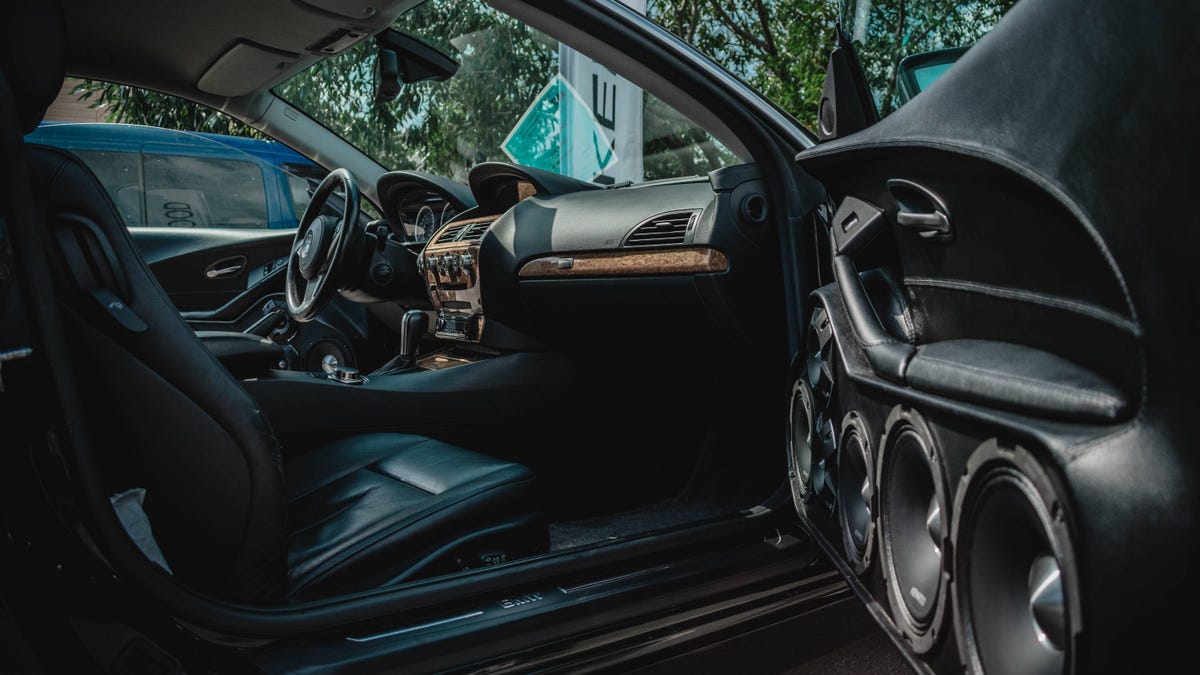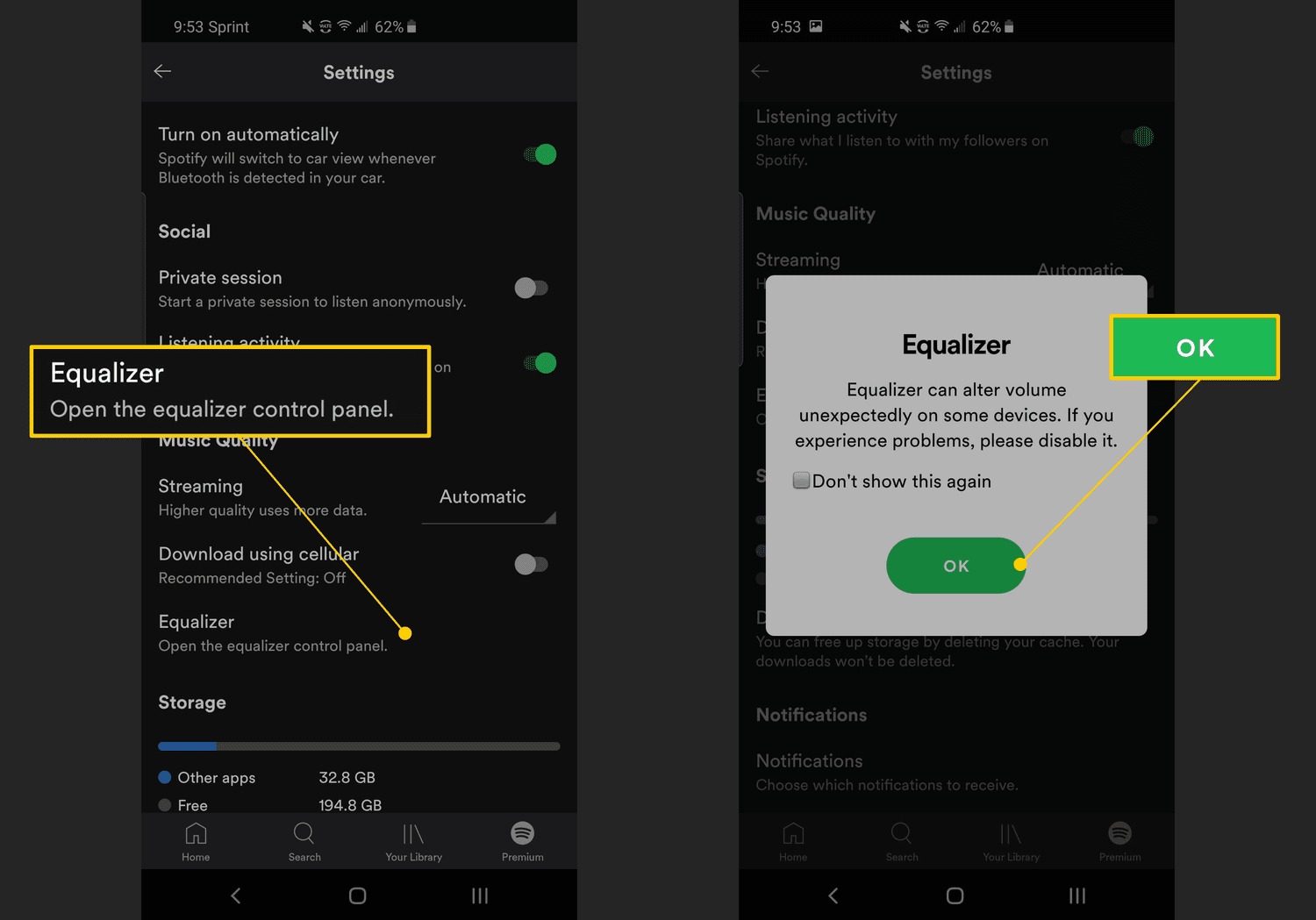Home>Instruments>Bass>How To Increase Bass In Car


Bass
How To Increase Bass In Car
Modified: January 22, 2024
Learn how to boost the bass in your car for a better audio experience. Discover effective techniques and tips to enhance the deep, rich bass tones.
(Many of the links in this article redirect to a specific reviewed product. Your purchase of these products through affiliate links helps to generate commission for AudioLover.com, at no extra cost. Learn more)
Table of Contents
Introduction
When it comes to enjoying music in your car, having deep, powerful bass can make all the difference. It adds depth and richness to your favorite songs, immersing you in the music and enhancing the overall listening experience. If you find that your car’s bass is lacking, don’t worry – there are several ways to increase the bass and take your audio system to the next level.
Before diving into the various methods of boosting bass in your car, it’s important to understand the concept of car bass. Bass is the low-frequency sound range that adds depth and impact to music. It can be felt as much as it is heard, providing a visceral and immersive experience.
In most factory car audio systems, the bass is often underwhelming. The speakers and amplifier are typically tuned to provide a balanced sound, rather than emphasizing bass. Fortunately, there are ways to upgrade your car’s audio system to achieve the powerful bass you desire.
In this article, we will explore different methods to increase the bass in your car. We will discuss options such as upgrading your car speakers, adjusting equalizer settings, adding a subwoofer, enhancing bass with sound dampening, and maximizing bass output without distortion. By following these techniques, you can transform your car’s audio system and enjoy deep, punchy bass that resonates with every beat.
Understanding Car Bass
Before we delve into the methods of increasing bass in your car, it’s important to grasp the fundamentals of car bass. Bass refers to the low-frequency sounds in a musical composition, typically covering the range of 20Hz to 250Hz. It is what gives music its depth, impact, and a sense of fullness.
In a car audio system, the bass is produced by speakers known as woofers. Woofers are specifically designed to handle low-frequency sounds and are responsible for reproducing those deep, booming notes. However, in most factory car audio systems, the bass can be lacking due to various factors such as speaker size, amplifier power, and sound dampening.
The size of the speakers plays a significant role in the level of bass reproduction. Smaller speakers may struggle to produce deep, resonating bass, whereas larger speakers have a better capability to handle lower frequencies. Additionally, the power output of your amplifier can affect the bass performance. A higher-powered amplifier can provide more power to the speakers, allowing them to deliver stronger and more impactful bass.
Another factor that can impact bass quality is sound dampening. Sound dampening materials, such as acoustic foam or specialized car sound deadening products, help minimize vibrations and unwanted noise. By reducing vibrations, sound dampening allows the speakers to perform more efficiently, resulting in improved bass response.
Now that we have a basic understanding of car bass, let’s explore the various methods you can use to enhance the bass performance in your car audio system. Whether you want subtle bass enhancement or earth-shaking thumps, there are options available to suit your preferences and budget.
Upgrading Car Speakers
One of the most effective ways to enhance the bass in your car is by upgrading your car speakers. Factory-installed speakers are often designed for a balanced sound rather than emphasizing bass. By replacing them with aftermarket speakers that are specifically optimized for bass reproduction, you can achieve a significant improvement in the overall sound quality.
When selecting new speakers for your car, there are a few key factors to consider. First, determine the speaker’s size requirements that are compatible with your car’s audio system. It’s essential to choose speakers that fit seamlessly into your vehicle without any modifications or alterations.
In addition to the speaker size, pay attention to the speaker’s power handling capabilities. This specification indicates the amount of power the speakers can handle without distorting the sound. Choosing speakers with a higher power handling rating allows you to turn up the volume and increase bass levels without sacrificing audio clarity.
Another factor to consider is the speaker’s frequency response range. A wider frequency response range indicates that the speaker can reproduce a broader range of frequencies, including lower bass notes. Look for speakers with a frequency response that extends down to at least 50Hz or lower for robust bass reproduction.
It’s also worth considering the construction and material of the speaker cone. High-quality materials like polypropylene or woven fabrics can provide better rigidity and accuracy in bass response. Additionally, speakers with rubber or foam surrounds help maintain proper speaker control and reduce distortion.
Once you have chosen your new speakers, it’s a good idea to have them properly installed by a professional. Proper installation ensures optimal performance and prevents any potential damage to your vehicle or speakers. A professional installer can also position the speakers for the best sound imaging and balance within your car’s interior.
By upgrading your car speakers, you can enjoy a significant boost in bass performance. The new speakers, designed specifically for enhanced bass reproduction, will deliver deeper, richer lows and make your favorite songs truly come alive.
Adjusting Equalizer Settings
Another effective method to increase bass in your car is by adjusting the equalizer settings. The equalizer is a feature found in most car audio systems that allows you to fine-tune the audio frequencies to your liking. By adjusting the equalizer settings, you can emphasize the bass frequencies and create a more pronounced and powerful bass response.
Most car audio systems have presets for different music genres, such as rock, pop, or jazz. While these presets can be a good starting point, they may not always provide the desired level of bass. To optimize the bass performance, it’s recommended to create a custom equalizer setting tailored to your preferences.
Begin by boosting the low frequencies, specifically the bass and sub-bass regions, on the equalizer. This will enhance the bass impact and give a fuller sound to your music. Be cautious not to boost the bass too much, as it can lead to distortion or overpowering other frequencies.
Next, consider adjusting the mid-range frequencies to ensure a balanced sound. Too much emphasis on the bass can muddy the overall audio and drown out other instruments and vocals. By finding the right balance between the bass and mid-range frequencies, you can achieve a well-rounded and impactful audio experience.
Experiment with different equalizer settings and listen to various songs across different genres to gauge the effect of your adjustments. Every car audio system and personal preference is different, so spend some time fine-tuning the equalizer to find the sweet spot that brings out the best bass response.
It’s worth noting that some car audio systems may come equipped with advanced equalizer settings, such as parametric or graphic equalizers. These allow for more precise adjustments by providing control over specific frequencies or bands. Utilizing these advanced equalizer features can further enhance the bass performance and give you even more control over the audio output.
Remember, adjusting the equalizer settings is a process of trial and error. Take your time to experiment and listen carefully to the changes in sound. With some patience and attention to detail, you can fine-tune the equalizer to enhance the bass and elevate your car audio experience to new heights.
Adding a Subwoofer
If you’re looking to take your car’s bass to the next level, adding a subwoofer is a highly effective option. A subwoofer is a specialized speaker designed specifically to reproduce low-frequency sounds, providing deep and powerful bass that can be felt as much as it is heard.
Subwoofers come in various sizes and configurations, including powered and passive options. Powered subwoofers have their own built-in amplifier, simplifying the installation process. Passive subwoofers require an external amplifier to power them. Consider factors such as available space in your vehicle, budget, and desired bass output when choosing a subwoofer.
When installing a subwoofer, placement is crucial. The ideal location for a subwoofer is often in the trunk or under a seat, as these positions allow for optimal bass distribution throughout the car. Keep in mind that subwoofers generate vibrations, so it’s essential to secure them properly to prevent any rattling or movement while driving.
After installing the subwoofer, it’s important to properly set the crossover and gain controls. The crossover determines the frequency range that the subwoofer will reproduce, while the gain control adjusts the subwoofer’s volume relative to the rest of the audio system. Fine-tuning these settings ensures a seamless integration of the subwoofer with your car’s speakers, preventing any imbalance or distortion in the sound.
Adding a subwoofer to your car audio system can have a transformative effect on your listening experience. The deep, resonating bass that a subwoofer produces adds a new dimension to your favorite music, elevating it to a whole new level of immersion and impact.
It’s worth mentioning that integrating a subwoofer into your car audio system may require additional upgrades, such as an amplifier or a dedicated wiring kit. These components ensure that the subwoofer receives enough power to deliver the desired bass performance. Consulting with a professional audio installer can help you determine the most suitable setup for your specific car and budget.
Whether you enjoy the chest-thumping beats of hip-hop or the smooth low-end of jazz, adding a subwoofer to your car audio system will undoubtedly enhance the bass experience and bring your music to life like never before.
Enhancing Bass with Sound Dampening
Sound dampening is an often-overlooked aspect of car audio systems, but it plays a crucial role in enhancing bass performance. Sound dampening materials help reduce vibrations and unwanted noise, allowing your speakers to operate more efficiently and deliver cleaner, more impactful bass.
One common cause of reduced bass performance is vibrations created by the car’s panels and interior surfaces. These vibrations can cause distortion and resonance, detracting from the overall audio quality. By applying sound dampening materials to strategic areas, such as the doors, trunk, and floor, you can minimize these vibrations and achieve a tighter and more accurate bass response.
There are a variety of sound dampening products available on the market, ranging from self-adhesive sheets to spray-on coatings. Self-adhesive sheets, often made of butyl rubber or mass-loaded vinyl, are easy to install and effectively reduce vibrations. Spray-on coatings, such as sound deadening paint or spray-on foam, provide a more customized and seamless solution.
When applying sound dampening materials, focus on areas that are prone to vibrations. This includes the metal surfaces of car doors, floor panels, and the trunk. Ensure thorough coverage and secure adhesion to maximize the effectiveness of the sound dampening treatment.
In addition to reducing vibrations, sound dampening materials can also help in blocking external noise from entering the car. This further enhances the bass performance by reducing background noise distractions and allowing the low-frequency sounds to be heard more clearly.
While sound dampening doesn’t directly boost the bass output, it improves the overall audio quality and allows your speakers to operate at their full potential. By minimizing vibrations and reducing external noise, you can experience a tighter, punchier bass response and greater clarity in the entire frequency range.
For the best results, consider consulting with a professional audio installer who can recommend and install the appropriate sound dampening materials for your specific vehicle. They have the expertise to identify key areas that require sound dampening and ensure a proper installation that maximizes the bass enhancement.
By incorporating sound dampening materials into your car audio system, you can take your bass performance to new heights. You’ll be able to enjoy deep, impactful bass without unwanted vibrations or external noise interfering with your listening experience.
Maximizing Bass Output without Distortion
When it comes to boosting bass in your car, it’s important to find the right balance between power and clarity. Maximizing bass output without distortion requires careful consideration of several factors, including amplifier settings, volume levels, and the quality of the audio source.
One of the first steps to prevent distortion is to ensure that your amplifier settings are properly configured. The gain control, also known as the amplifier’s input sensitivity, needs to be set correctly to match your audio source’s output level. Too much gain can result in a distorted and muddy bass, while too little can make the bass sound weak and lackluster. Adjust the gain control to achieve a clean and powerful bass signal.
It’s also crucial to pay attention to the volume levels. Pushing your audio system to its maximum volume or excessively boosting the bass can lead to clipping and distortion. Clipping occurs when the amplifier is pushed beyond its limits, resulting in a distorted sound. To maximize bass output without distortion, find a balance between volume and bass levels that allows for clear and dynamic sound reproduction.
An often overlooked aspect is the quality of the audio source. Using high-quality audio files or streaming services that offer lossless audio can make a significant difference in bass performance. Lossy audio files, such as low-bitrate MP3s, can introduce compression artifacts and degrade the overall sound quality, including bass reproduction. Opt for high-quality audio sources for a more accurate representation of the bass frequencies.
Additionally, consider the placement of your speakers within the car. Proper positioning can help optimize the bass response and minimize distortion. Experiment with speaker placement to achieve the best possible bass performance. This may involve adjusting the angle and distance of the speakers or using speaker enclosures designed specifically for enhanced bass reproduction.
Lastly, be mindful of the overall balance of your audio system. The bass should complement the other frequencies rather than overpowering them. Adjust the equalizer settings as needed to achieve a balanced sound where the bass is powerful, yet still allows the other instruments and vocals to shine through.
By paying attention to amplifier settings, volume levels, audio source quality, speaker placement, and overall audio balance, you can maximize the bass output in your car audio system without sacrificing clarity or introducing distortion. Finding the right combination of these factors will result in a well-defined and immersive bass experience that adds depth and impact to your music.
Conclusion
Enhancing the bass in your car audio system can greatly transform your listening experience. Whether you want to feel the thumping beats of your favorite songs or enjoy the richness and depth of low-frequency sounds, there are several effective methods to achieve your desired bass performance.
Upgrading your car speakers to models specifically designed for enhanced bass reproduction can make a significant difference. Choosing speakers with larger sizes, higher power handling, and quality construction materials can deliver richer, more impactful bass.
Adjusting the equalizer settings allows you to fine-tune the audio frequencies and emphasize the bass to your liking. By experimenting with different settings and finding the right balance between bass and other frequencies, you can achieve a well-rounded and powerful sound.
Adding a subwoofer is another popular method to increase bass output. A subwoofer specializes in reproducing low-frequency sounds and can provide deep, rumbling bass that can be felt in your chest. Proper placement and integration of the subwoofer can enhance the overall bass performance and immerse you in your music.
Sound dampening plays a crucial role in reducing vibrations and external noise, allowing your speakers to operate more efficiently and deliver cleaner, more impactful bass. Applying sound dampening materials to strategic areas of your car helps minimize unwanted vibrations and enhances bass response.
Finally, it’s important to maximize bass output without distortion. Proper amplifier settings, volume control, high-quality audio sources, and speaker placement all contribute to achieving clear, powerful bass without compromising audio clarity.
By combining these methods and fine-tuning your car audio system, you can create a captivating and immersive listening experience with deep, powerful bass that brings your music alive. Whether you’re listening to your favorite tunes or enjoying a thrilling road trip, the enhanced bass will add a new dimension to your car audio journey. So, buckle up and get ready to experience music like never before.











